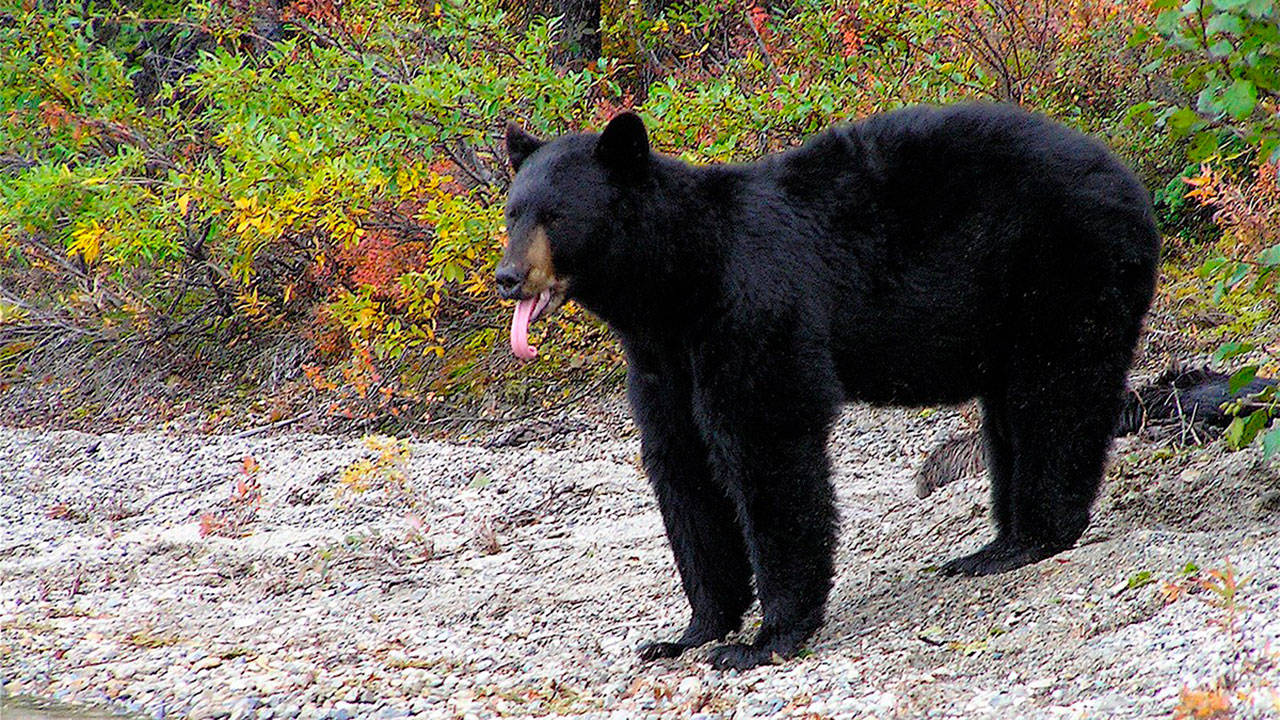VERLOT — A bear climbed into a parked car, stole a sandwich and swiped at a dog sitting inside.
The bear ran off — only after the car’s owners showed up and started shooting at it.
That’s one of many ursine encounters this season near the Mountain Loop Highway. Foresters have received reports of a bear ransacking a tent and raiding a backpack while a hiker dipped in an alpine lake. In at least one case, a bear ignored gunshots and waltzed through an occupied campsite.
“I wouldn’t say it’s an extremely unusual year, but the number of bears out there is high,” said Colton Whitworth, a spokesman for the U.S. Forest Service. “They’re not responding to yelling or noise.”
Foresters received 38 reports of bear run-ins near the Mountain Loop Highway from May 27 through Tuesday. The area is part of the Mount Baker-Snoqualmie National Forest.
The bears are likely attracted to food scraps and garbage near campgrounds and trails. They’re losing their instinctive fear of humans. Once that happens, they can become more aggressive and may need to be put down.
“We want people to know: These bears are getting habituated,” Whitworth said. “They’re getting used to people.”
Foresters advise people to take precautions when heading into the wild. Basic safety steps include carrying bear spray and using bear-proof storage containers for food.
Never feed bears.
“It is tempting to leave or offer food to bears that seem to be tame,” an agency news release warned. “This will only lead to bears adopting behaviors that will result in euthanasia.”
The Cascade foothills are prime habitat for black bears. The omnivores can grow to more than 200 pounds. They can damage property and, in rare cases, kill people.
It’s not uncommon to see them roaming through the suburbs, either.
In June, state wildlife officers trapped a bear in Mukilteo, not far from Harbour Pointe Middle, Kamiak High and Columbia Elementary schools. They estimated it weighed between 120 and 150 pounds. It may have been the same bear spotted days earlier in the Lynnwood area.
This year, for the first time, state wildlife officials started tallying local bear sightings. As of this past week, they were at 327 and counting for Snohomish County.
“That is definitely not 327 bears,” said Sgt. Jennifer Maurstad, who oversees Snohomish County for the state Department of Fish & Wildlife. “That’s probably actually very few bears, but one bear going through a neighborhood in Mill Creek or Bothell is going to generate many, many calls.”
The same bold bear could be responsible for a large number of run-ins near the Mountain Loop, Maurstad said.
Most of the sightings come from south Snohomish County.
“I would say that’s because there are more people — not because there are more bears,” Maurstad said.
People in north Snohomish County might be more accustomed to seeing them in their neighborhood and less likely to call in a report.
The PAWS Wildlife Center in Lynnwood has taken in five bears this year, spokeswoman Laura Follis said. That’s close to the four taken in during each of the two previous years.
To report a nuisance bear by phone, call the state Department of Fish & Wildlife’s local office: 425-775-1311.
Noah Haglund: 425-339-3465; nhaglund@herald net.com. Twitter: @NWhaglund.
IF YOU SEE A BEAR …
• Never run.
• Remain calm and pick up small children.
• Continue to face the bear while backing away slowly. Talk calmly to let the bear know you are there.
• Maintain a safe distance. Never block a bear’s travel route.
• If you see a cub alone, don’t approach. Mama bear could be nearby.
• If a bear approaches, make yourself look big and scary by outstretching your arms, holding packs above your head, and making loud noises.
TIPS FOR HIKING IN BEAR COUNTRY
• Do not feed bears or other wildlife.
• Carry bear spray within easy reach. Know how to use it.
• Hike as a group, keep children with you and dogs leashed.
• Do not store food in a tent, including clothing with food residues. Clean utensils and food-prep areas after use.
• Do not leave food unattended at a campsite or in your vehicle. Use bear-resistant containers for food storage and disposal when available.
Talk to us
> Give us your news tips.
> Send us a letter to the editor.
> More Herald contact information.

























